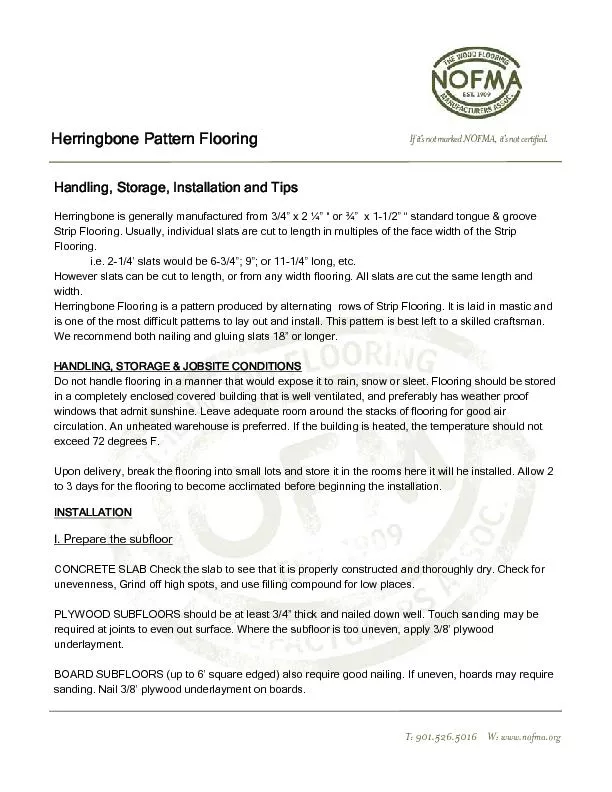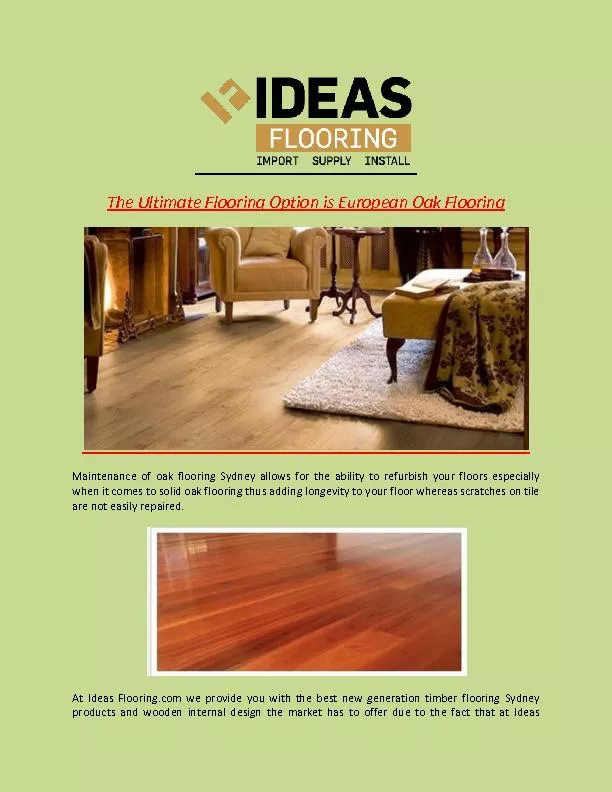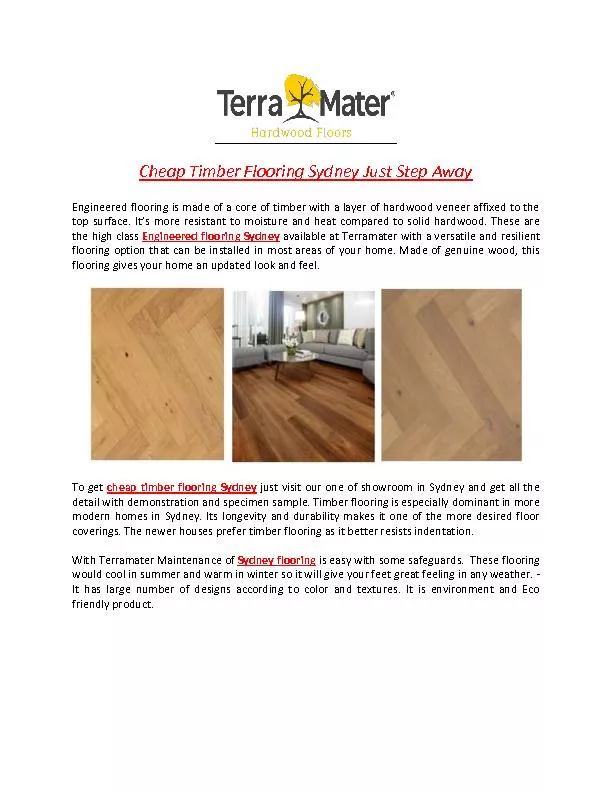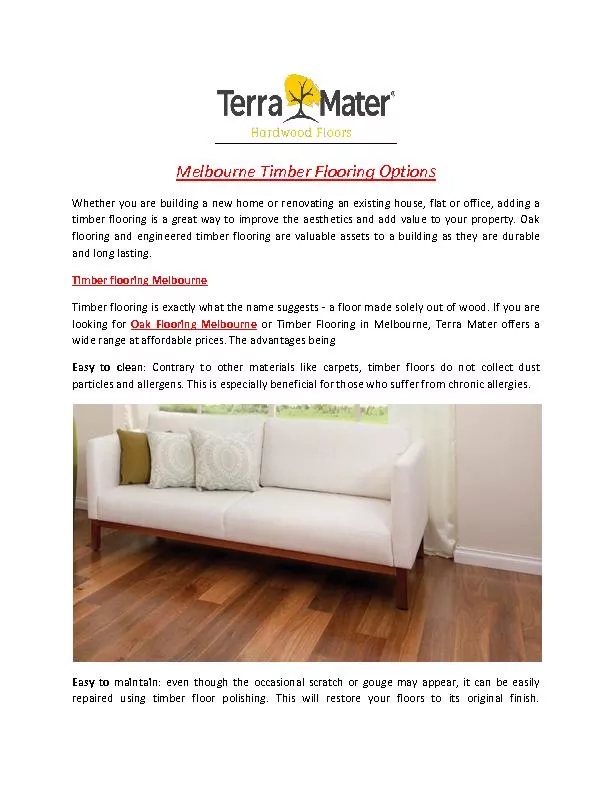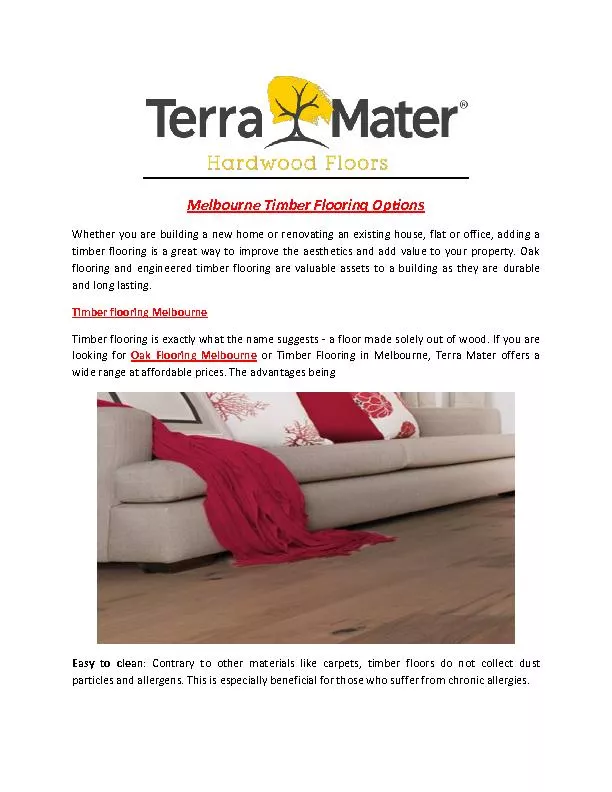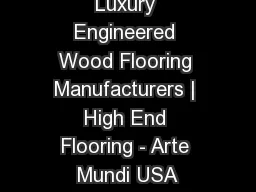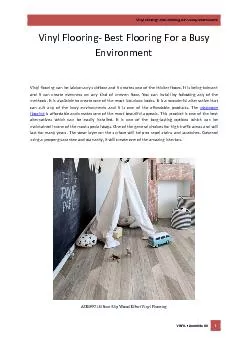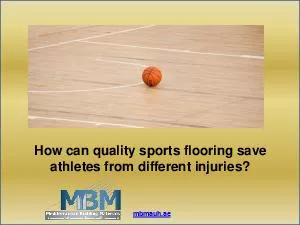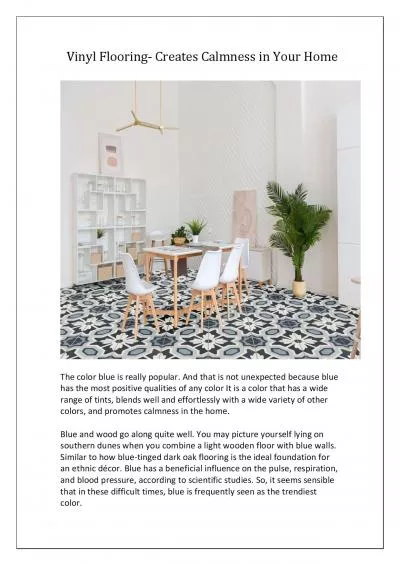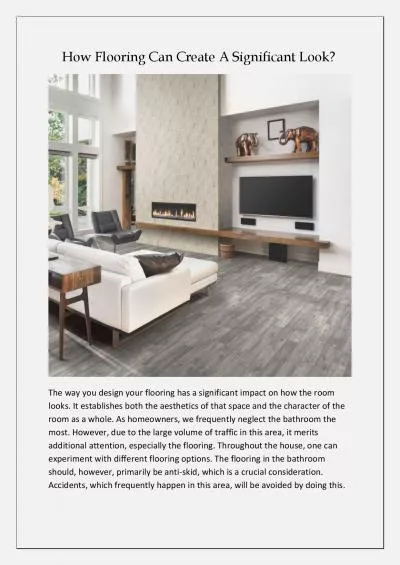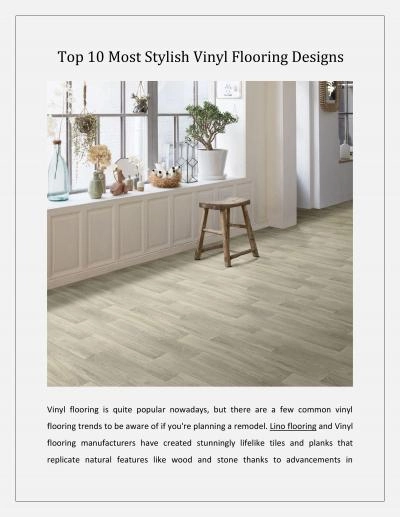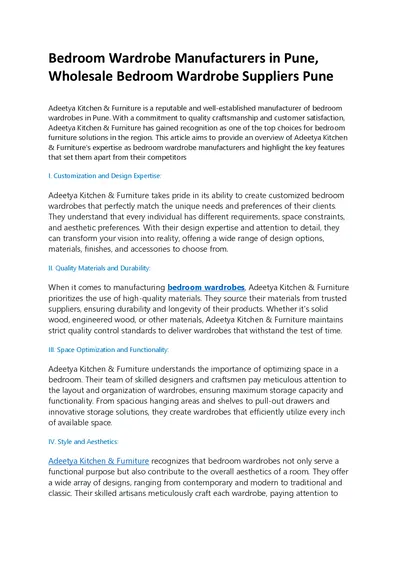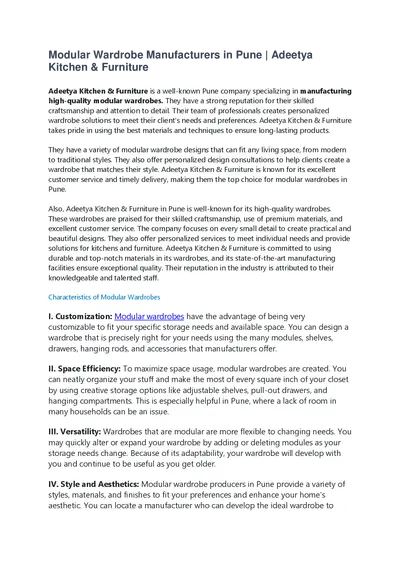PDF-NOFMA: The Wood Flooring Manufacturers Association
Author : celsa-spraggs | Published Date : 2016-04-23
1 Check the room for squareness Measure the diagonals of the room If they are equal the room is 2 Herringbone is at best a difficult pattern to put down Two things
Presentation Embed Code
Download Presentation
Download Presentation The PPT/PDF document "NOFMA: The Wood Flooring Manufacturers A..." is the property of its rightful owner. Permission is granted to download and print the materials on this website for personal, non-commercial use only, and to display it on your personal computer provided you do not modify the materials and that you retain all copyright notices contained in the materials. By downloading content from our website, you accept the terms of this agreement.
NOFMA: The Wood Flooring Manufacturers Association: Transcript
Download Rules Of Document
"NOFMA: The Wood Flooring Manufacturers Association"The content belongs to its owner. You may download and print it for personal use, without modification, and keep all copyright notices. By downloading, you agree to these terms.
Related Documents

